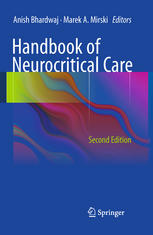

Most ebook files are in PDF format, so you can easily read them using various software such as Foxit Reader or directly on the Google Chrome browser.
Some ebook files are released by publishers in other formats such as .awz, .mobi, .epub, .fb2, etc. You may need to install specific software to read these formats on mobile/PC, such as Calibre.
Please read the tutorial at this link: https://ebookbell.com/faq
We offer FREE conversion to the popular formats you request; however, this may take some time. Therefore, right after payment, please email us, and we will try to provide the service as quickly as possible.
For some exceptional file formats or broken links (if any), please refrain from opening any disputes. Instead, email us first, and we will try to assist within a maximum of 6 hours.
EbookBell Team

5.0
58 reviewsNeurocritical care as a subspecialty has grown rapidly over the last two decades and has reached a level of distinct maturity with the advent of newer monitoring, diagnostic and therapeutic modalities in a variety of brain and spinal cord injury paradigms. Handbook of Neurocritical Care, Second Edition remains true to the operative tenet that "time is brain," and rapid diagnosis and therapeutic interventions in these challenging patients cannot be overemphasized. The second edition of this important Handbook again serves as a quick, practical reference for those involved in the care of critically ill neurological and neurosurgical patients. The care provided to this subset of critically ill patients continues to be multidisciplinary and includes care rendered from colleagues in emergency medical services, emergency medicine, neurology, neurosurgery, anesthesiology, critical care, nursing and physician assistance. Fully updated, all of the chapters again consist of easy-to-read, bulleted points followed by a list of Key Points and important references allowing for rapid access to vital information critical for fast and timely decision making. The first section covers a myriad of important general principles while the second section addresses the major diagnostic categories of neurocritical care with several new topics; these include, for example, neuroleptic malignant syndrome and malignant hyperthermia, meningitis and encephalitis, and intraventricular hemorrhage. Readers will find the algorithms, tables, and illustrations throughout the book not only useful but truly invaluable in facilitating fast and accurate decision making. Accessible and comprehensive, Handbook of Neurocritical Care, Second Edition again fills a vital need by providing readers with a succinct and practical approach to the management of critically ill neurological and neurosurgical patients.